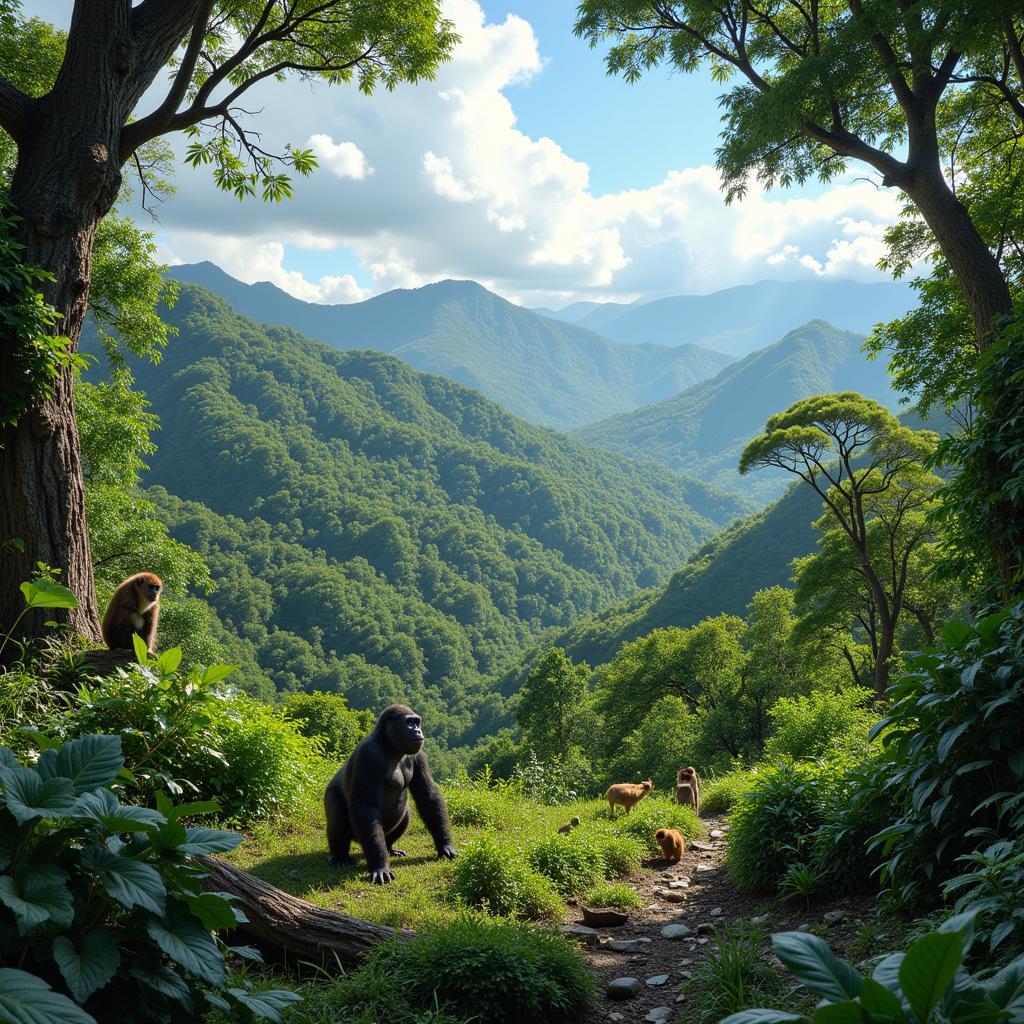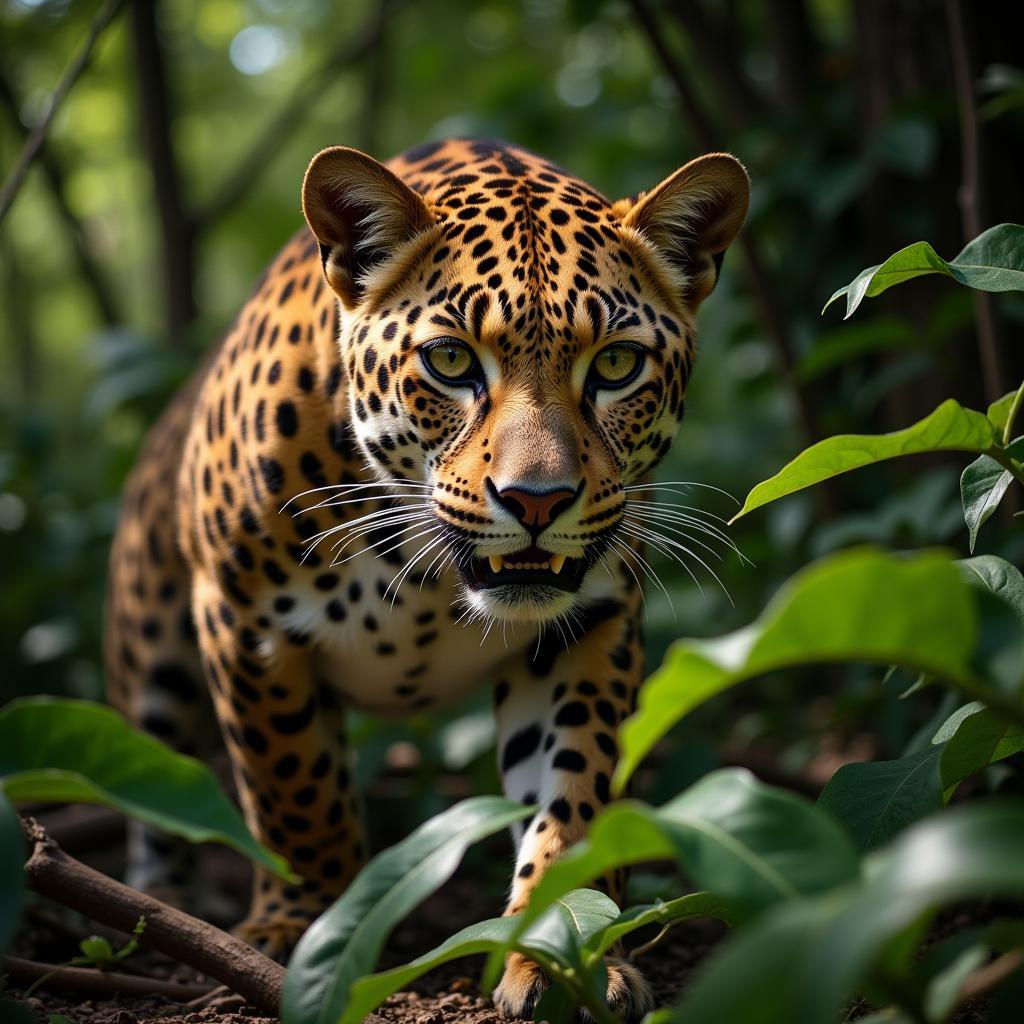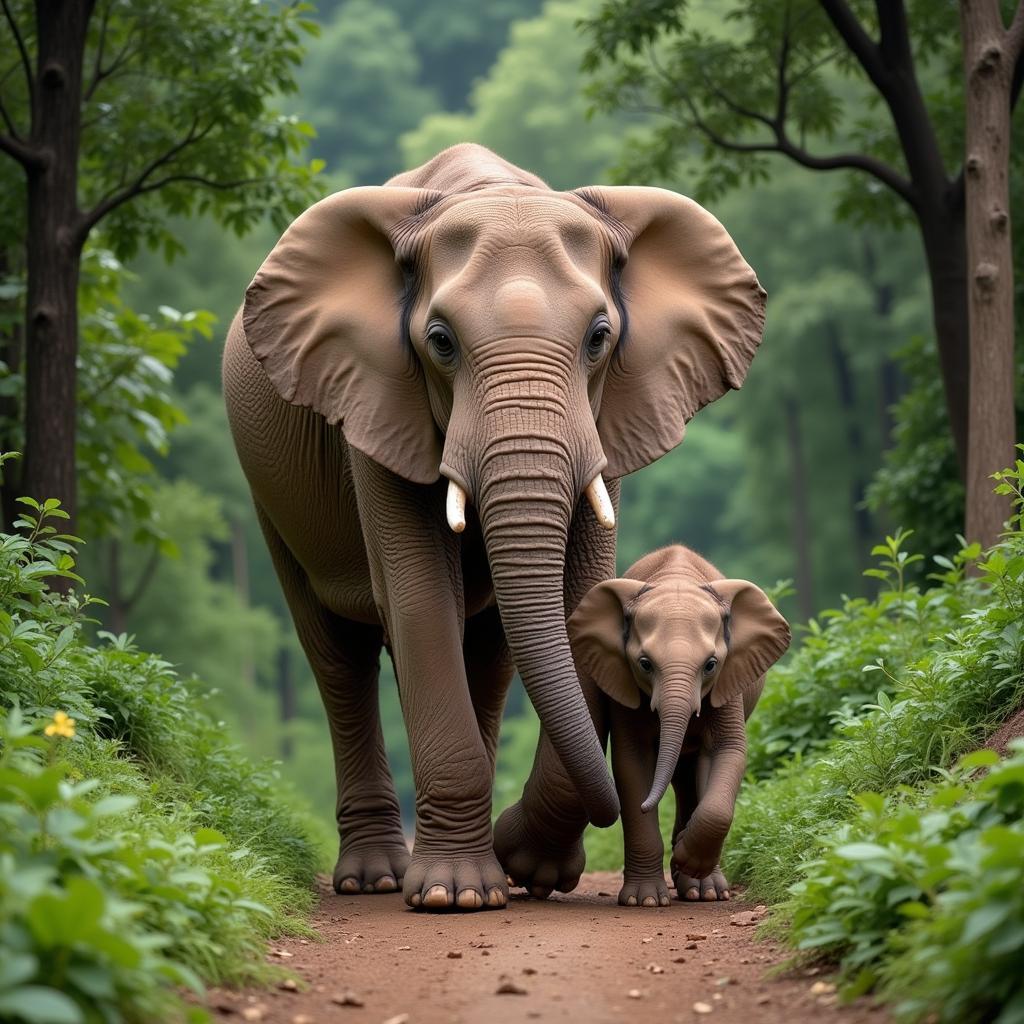African Jungle Animals List: A Guide to the Diverse Wildlife
Africa, the second-largest continent globally, boasts an astounding diversity of wildlife. Its jungles, in particular, are teeming with a fascinating array of animals, each uniquely adapted to this challenging yet captivating environment. This guide delves into the rich tapestry of African jungle animals, offering a glimpse into their lives and the importance of their conservation.
 Diverse African Jungle Wildlife
Diverse African Jungle Wildlife
Navigating the Lush Green Kingdom: Iconic African Jungle Animals
From the strength of the African forest elephant to the stealth of the leopard, African jungle animals showcase an incredible range of adaptations and survival tactics. Here’s a closer look at some of the most iconic inhabitants:
African Forest Elephant
Often called the ‘megagardener’ of the jungle, the African forest elephant (Loxodonta cyclotis) plays a crucial role in shaping its environment. Smaller than its savanna counterpart, this gentle giant creates clearings in the dense vegetation, promoting forest regeneration. Its diet of fruits, leaves, and bark aids in seed dispersal, making it a keystone species.
Western Lowland Gorilla
The largest of the great apes, the western lowland gorilla (Gorilla gorilla gorilla) thrives in the dense rainforests of Central Africa. Living in tightly-knit family groups led by a dominant silverback, these intelligent primates display complex social interactions. Their diet consists mainly of fruits, leaves, and stems.
African Leopard
The epitome of stealth and agility, the African leopard (Panthera pardus pardus) reigns supreme as a top predator in the jungle. Its spotted coat provides excellent camouflage, allowing it to stalk its prey, which includes antelopes, monkeys, and rodents. Their powerful limbs enable them to climb trees with ease, dragging their kills to keep them safe from scavengers.
Okapi
Often referred to as the ‘forest giraffe,’ the okapi (Okapia johnstoni) is a solitary and elusive creature found only in the dense rainforests of the Democratic Republic of Congo. Its reddish-brown coat, striped hindquarters, and long neck make it a truly unique animal. The okapi’s long, prehensile tongue helps it strip leaves and buds from trees and shrubs.
 Camouflaged African Leopard in the Jungle
Camouflaged African Leopard in the Jungle
Beyond the Big Names: Unveiling the Diversity of African Jungle Life
The African jungle ecosystem thrives on the interconnectedness of its inhabitants, from large mammals to tiny insects. Here are some other notable residents:
-
Chimpanzee: Known for their intelligence and tool-using abilities, chimpanzees (Pan troglodytes) live in complex social structures and contribute to seed dispersal through their frugivorous diet.
-
Bongo: This large, strikingly beautiful antelope (Tragelaphus eurycerus) sports a reddish-brown coat with vertical white stripes and impressive horns.
-
African Forest Buffalo: Smaller and more reclusive than the savanna buffalo, the African forest buffalo (Syncerus caffer nanus) prefers dense cover.
-
Mandrill: With its brightly colored face and rump, the mandrill (Mandrillus sphinx) is hard to miss. These omnivores live in large social groups and play a role in seed dispersal.
-
Grey Parrot: Renowned for their intelligence and ability to mimic human speech, grey parrots (Psittacus erithacus) are a charismatic and vital part of the jungle ecosystem.
Facing the Challenges: Conservation of African Jungle Animals
The breathtaking biodiversity of African jungles faces numerous threats, including:
-
Habitat loss and fragmentation: Deforestation due to logging, mining, and agriculture is shrinking the space for these animals to thrive.
-
Poaching and illegal wildlife trade: The demand for bushmeat and animal parts poses a grave threat to numerous species, pushing some towards extinction.
-
Climate change: Altering weather patterns and increasing the frequency of extreme events like droughts and floods impact the delicate balance of the jungle ecosystem.
 African Forest Elephant Family
African Forest Elephant Family
Ensuring a Future for African Jungle Animals
Protecting these incredible creatures and their habitat is not just a conservation effort—it’s our shared responsibility. Here’s how we can contribute:
-
Supporting conservation organizations: Numerous NGOs and initiatives are dedicated to protecting African wildlife and their habitats.
-
Making conscious consumer choices: Avoiding products linked to deforestation and the illegal wildlife trade makes a difference.
-
Spreading awareness: Educating ourselves and others about the importance of conservation and the threats these animals face is crucial.
By working together, we can ensure that future generations inherit the awe-inspiring legacy of African jungle animals.
Frequently Asked Questions about African Jungle Animals
What is the largest animal found in the African jungle?
The African forest elephant holds the title of the largest animal in the African jungle.
Are there tigers in the African jungle?
No, tigers are not native to Africa. They are found in Asia.
What is the most dangerous animal in the African jungle?
While there are many potentially dangerous animals, the African forest buffalo is often considered the most dangerous due to its unpredictable nature and powerful build.
How many species of animals are found in the African jungle?
The exact number is unknown, but the African jungle is home to thousands of animal species, many of which are yet to be discovered.
What can I do to help protect African jungle animals?
You can support conservation organizations, make sustainable choices, and spread awareness about the importance of protecting these animals and their habitat.
Exploring the Wild: Delve Deeper into the African Jungle
If you’re fascinated by African jungle animals, explore these related topics:
-
African animal pictures cartoon: Discover charming illustrations that bring these animals to life.
-
African jungle animals photos: Immerse yourself in the beauty of these creatures through stunning photography.
-
African cats wallpaper: Adorn your devices with captivating images of these majestic felines.
-
African jungle clipart black and white easy: Find simple yet elegant clipart for your projects and presentations.
-
African camo patterns: Learn about the intricate camouflage patterns that help these animals blend into their surroundings.
The African jungle, with its astounding array of animals, offers a glimpse into the intricate web of life on Earth. By understanding and appreciating this rich ecosystem, we can contribute to its preservation for generations to come.
For any inquiries or assistance, please don’t hesitate to reach out to our dedicated team at +255768904061 or [email protected]. You can also visit us at Mbarali DC Mawindi, Kangaga, Tanzania. We’re available 24/7 to assist you.
